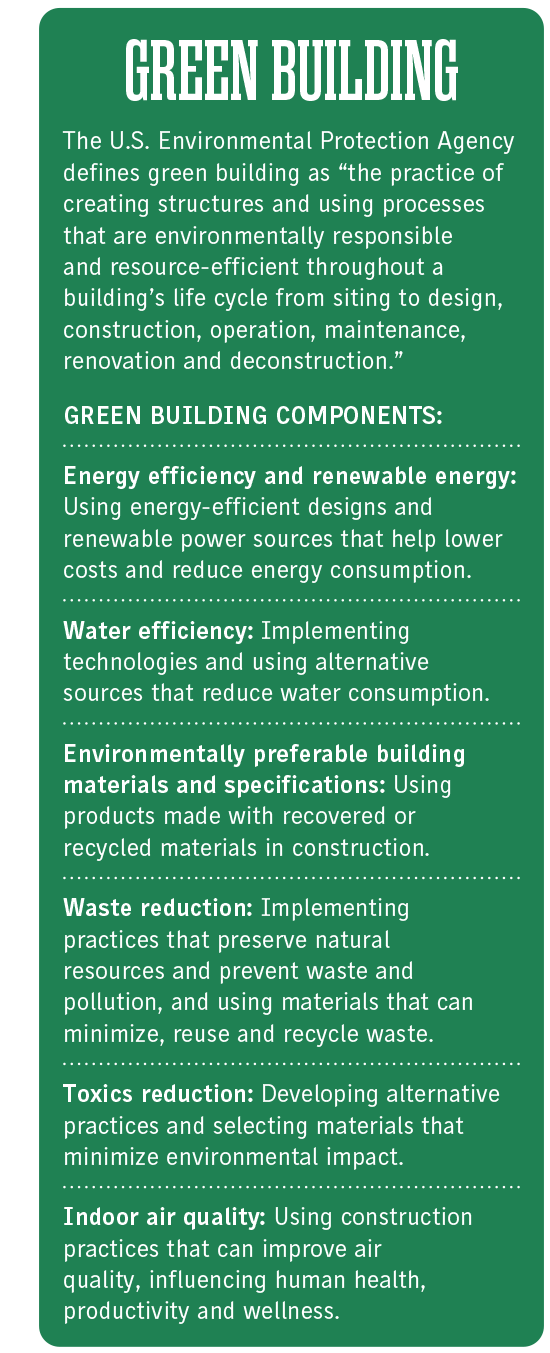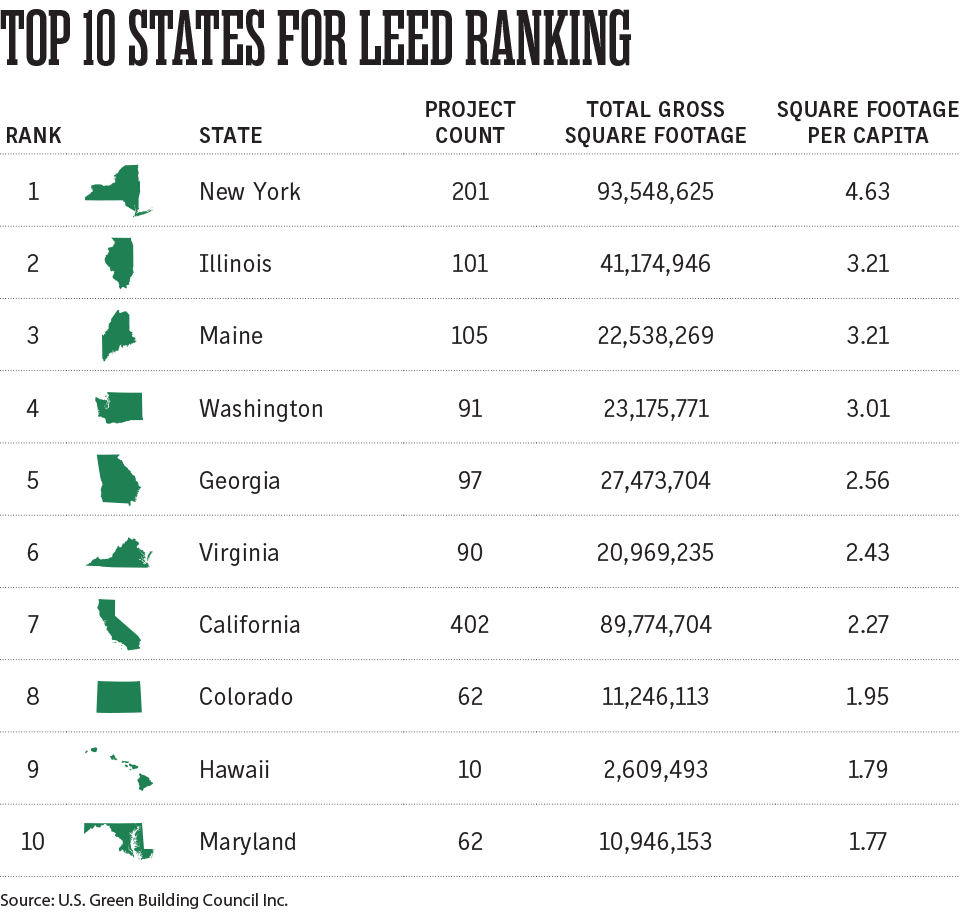Green building owners confront insurance hurdles
Reprints
Insurers have offered specialty coverage for green buildings for years, but businesses that invest in more sustainable materials and technologies are not yet seeing the benefits reflected in the cost of their insurance programs.
Adding green features such as vegetated roofs, rooftop solar and alternative energy systems to properties can improve their efficiency but may make them more difficult to insure, brokers and risk managers say.
Insurers are more educated than they used to be about green buildings, but they’re still not there, said Kevin Bates, group head of risk and insurance for Australian construction company Lendlease Corp. in Sydney, and a Risk & Insurance Management Society Inc. board director.
“They haven’t got their heads around the fact that green buildings are designed differently,” Mr. Bates said.
A green building constructed in a flood plain, for example, may have been engineered so that it’s a meter and a half higher than the surrounding area and not damaged in a flood, he said.
“It doesn’t matter how often you explain that. It still gets treated the same. You get slapped for valuation but not the benefit yet from a rating perspective,” he said.
Michael Lubben, Chicago-based vice president, risk management and benefits, at Henry Crown and Co./CCI, said the company added solar panels to a manufacturing facility in Livermore, California, two years ago, as it looked to become more energy efficient.
Even though the panels were highly resistant and constructed, installed and maintained properly, its insurer increased the maximum foreseeable loss on the building dramatically and reduced its capacity to 35% from 100%, Mr. Lubben said.
“It left us having to scramble to find the needed capacity for that building,” he said.
Henry Crown, which has a global property program, tried more than 20 different insurers, and finally secured coverage for the facility on a standalone basis with FM Global, he said.
There’s a lot of uncertainty around green building technologies and their effect on insurance coverage, said Penni Chambers, Dallas-based vice president of risk management at real estate developer Hillwood, a Perot company, and a Risk & Insurance Management Society Inc. board director.
From an environmental, social and governance perspective, if a business uses leading-edge technologies, it can benefit insurers’ portfolios because it is positive for their own ESG disclosures, Ms. Chambers said.
“But when the claim happens, are they really going to be happy? Do we understand what that replacement cost is going to be? Do we understand the after-effects?” she said.
Putting out a solar panel fire takes significantly more water than a conventional property fire, for instance, Ms. Chambers said, adding, “What does that social impact and that climate impact do not only to risk management and our company’s story but also to the insurer’s story? We don’t know that yet.”
Green technologies change risks
Green building practices are becoming more widespread as legislative and regulatory changes require real estate owners to minimize the environmental impact of buildings as climate concerns rise.
 In 2023, there were more than 6,000 LEED-certified commercial projects worldwide representing 1.36 billion gross square footage, according to the U.S. Green Building Council. The Inflation Reduction Act, signed into law in 2022, which offers various tax credits to encourage sustainable construction and the adoption of green technologies, is driving increased interest in Leadership in Energy and Environmental Design projects, a rating system for green buildings.
In 2023, there were more than 6,000 LEED-certified commercial projects worldwide representing 1.36 billion gross square footage, according to the U.S. Green Building Council. The Inflation Reduction Act, signed into law in 2022, which offers various tax credits to encourage sustainable construction and the adoption of green technologies, is driving increased interest in Leadership in Energy and Environmental Design projects, a rating system for green buildings.
Construction companies will be required to innovate rapidly to meet greenhouse gas emission reductions that align with science-based targets, but innovations can introduce new risks, said Chris Semlies, New York-based assistant vice president for construction project and business resilience at Zurich North America. Globally, greenhouse gas emissions from the built environment represent 39% of gross annual carbon emissions, he said.
Mass timber can reduce a building’s embodied carbon emissions significantly compared with conventional steel and concrete construction, but it can also introduce fire, supply chain and water damage risks, Mr. Semlies said.
Insurers should conduct due diligence of green building risks and understand how the different risks associated with the material are being addressed, he said.
The more sustainable a business can be the better from an environmental point of view, but sometimes that comes with some unintended consequences, said Sam Iannucci, Philadelphia-based fire protection lead at Chubb Ltd.
Vegetated roofs, for example, can reduce the heat island effect in which heat becomes trapped in dense urban areas, but whether it’s a vegetated or solar roof, the building structure must be able to hold the additional weight of the materials, he said.
A hospital that received medical helicopters for trauma patients wanted to install a vegetated roof, Mr. Iannucci said. “What we didn’t think about at first was the downdraft from the propellers would blow the growing material up, so before we went live, we talked about changing the flight path of the medical helicopters,” he said.
Policyholders should speak with their insurers about green initiatives before they start selecting materials, Mr. Iannucci said.
More policyholders are considering sustainable building materials that can improve insulation, said Amy Brown, vice president, manager of natural hazard underwriting, at FM Global in Johnston, Rhode Island.
They should find a balance between installing insulation that is sustainable and will improve the wear of the building and using a material that is fire resistant and resilient, she said.
Green building materials tend to be more expensive than standard construction materials, which can increase the risk of cost overruns and have a significant impact on a project’s time schedule, said Jon Peeples, vice president of environmental at Philadelphia Insurance Co.
In addition, professional liability risks can arise if a green building doesn’t meet the owner’s expectations by achieving a certain certification or if the cost to maintain the property is higher than expected, Mr. Peeples said (see related story).
Coverage impact
Green additions and upgrades can be more costly and difficult to insure but not always, according to brokers.
Endorsements can be added to commercial property policies that provide coverage for the increased cost to repair or replace damaged property using materials that are recognized as “green,” said Meg Glenn, Denver-based real estate practice leader at CAC Specialty.
The cost of the upgraded coverage varies, depending on the limit, Ms. Glenn said. “The higher the limit, the more expensive the cost will be,” she said.
If policyholders using green technologies can show insurers they are controlling or mitigating the risks to the building’s overall structure, coverage is readily available, with “little price or rate impact on those assets,” said Joe Macejak, Chicago-based Central zone real estate leader in the U.S. property practice at Marsh LLC (see related story).
But there are exceptions, Mr. Macejak said. Solar panels, if they are not correctly installed with the appropriate mitigation processes, present a higher fire risk to an asset, he said, adding, “The same could be said with a grass-type roof.”
A green building might cost more to insure in some cases, but “it’s not an absolute,” said Rick Miller, Boston-based U.S. property leader for Aon PLC’s commercial risk solutions business.
“If you have an old building, it may be cheaper to replace that old building with modern technology,” he said.
“The factor is: Does it change the replacement value of that facility going forward? If there’s a significant change, assuming that’s upward, then it’s pressure on premium because, like it or not, in property it’s value times a property rate,” Mr. Miller said.
Insurance-to-value is a key issue for building owners as they consider the cost of adding green features to properties and how the costs are reflected in their insurance coverage, said Ron Guerena, senior vice president, Southern California practice leader, property & casualty, at Woodruff Sawyer & Co.
